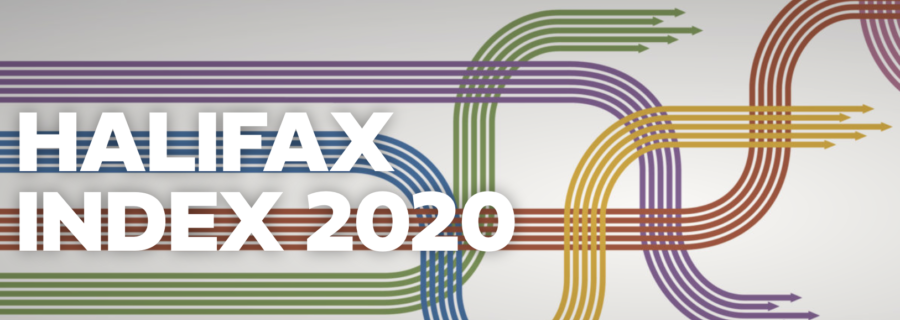This is a guest post from Halifax Partnership
(Member since 1996)
In June, the Halifax Partnership published the 2020 edition of the Halifax Index.
The Index tells our city’s story: it provides insights from the prior year to help Halifax strengthen and grow, and it measures results against a scorecard of social and economic indicators.
The 2020 Index, however, is unlike previous editions in that it serves two purposes: to measure and report on progress made in 2019 and to identify the initial impacts of the COVID-19 pandemic in 2020.
It won’t surprise many that 2019 was an excellent year for Halifax. Our city boasted vibrancy and growth with:
- New records for population growth and net international and interprovincial migration
- An increase in employment and decrease in unemployment
- The highest GDP growth in years
- High business confidence
- An increase in total enrolment at Halifax universities for the first time in five years
- Record international student enrolment
- An increase in the labour force participation rate (the share of the adult population in the labour force)
- New records for cruise ship passengers and air cargo
While celebrating this success, there are areas where there is work to be done. As we reopen and reimagine Halifax and recover from COVID-19 impacts, we must strive to ensure that no one is left behind.
Apartment rents increased and the vacancy rate dropped below one percent. Residents’ ratings of housing affordability dropped to a record low, and businesses said the cost of living is a net disadvantage for Halifax. Consumer insolvencies in Halifax reached a peak last year for the period 2011-19.
While 2019 was a banner year, for reasons entirely unanticipated and outside of our control, 2020 is painting a very different picture for our city:
- Forecasts have Halifax’s GDP contracting by 3.4%
- The tourism, retail, restaurant and personal services industries all experienced major hits to sales and employment
- Current unemployment rates are around 12%
- The labour under-utilization rate (which includes those who have stopped looking for work and are experiencing reductions in hours worked) jumped during the crisis to around 35%
These are just the preliminary measures. New data points that show the impact of COVID-19 on population growth, immigration, international student enrolment and business and consumer insolvencies will be rolling out in the coming months and over the next year. Our city will likely see substantial declines in these areas, at least for the short term.
The silver lining is that the strength of Halifax’s economy in 2019, in addition to the effort and sacrifice all Nova Scotians made to stay home and slow the spread of COVID-19, have made Halifax well-placed to rebound quickly.
Moreover, many businesses have made innovative shifts in their products, services and delivery models in response to COVID-19 that will serve our city well as we continue our economic recovery.
While uncertainties remain, particularly as we move into the fall and the potential of a second wave, we can continue to act with responsibility, compassion and commitment – towards each other, our communities and businesses.
Let’s celebrate the great work we’ve done so far to manage the spread of the virus in our city and province, and let’s support local business whenever and wherever possible.
For these findings and more, view the first digital Halifax Index at halifaxindex.com.
< Back to Articles | Topics: Working for you

